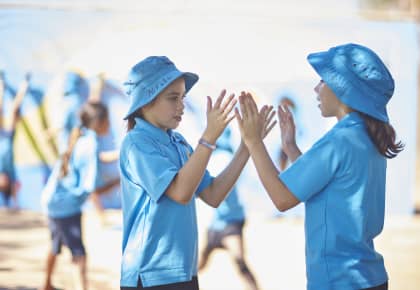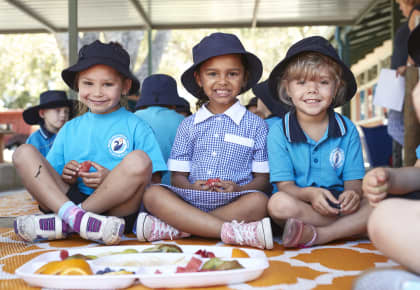Healthy living
Healthy living
Eating well and being active is critical for both short and long-term health and wellbeing. It also has a direct impact on a child’s performance at school.
The school day is busy, filled with learning, concentration and physical activity. Food is fuel for our bodies, and healthy food provides your child with energy and nutrients to get them through the day. Physical activity can improve mental health and wellbeing, and help children develop movement skills and confidence.
Healthy eating habits start at home and schools play a supporting role in ensuring children understand the importance of making healthy food choices. Try to pack your child’s lunchbox with healthy food from the 5 food groups including wholegrains, protein, dairy, vegetables and fruits.
The Department of Health’s Fresh School Nutrition Advisory Program (FreshSNAP) 1helps schools to take a whole of school approach to healthy eating. FreshSNAP includes:
- a statewide advisory service
- an interactive website including FoodChecker 2that helps with canteen menu planning
- parent information and resources.
School canteens and food services use a traffic light system to plan menus full of healthy and nutritious food and drinks.
- ‘green’ food and drink, accounting for a minimum of 60% of the menu
- ‘amber’ food and drink accounting for a maximum of 40% of the menu
- ‘red’ food and drink are not on the menu.
There are many children in schools with food allergies. It isn’t possible to remove all allergens from schools, so we encourage parents and children to become allergy aware. Your child’s school will advise you of their strategies to minimise the risk of allergen exposure in schools which may include:
- removing nut spreads and products containing nuts from the school canteen
- requesting that classmates of primary school students do not include nut spreads in sandwiches or products containing nuts in their lunchbox.
If your child has an allergy it is important for you to advise the school and complete the relevant Management and Emergency Response Plan3.
Schools provide your child with at least two hours of physical activity every week. Physical education helps develop skills for participation in sport and recreation activities.
It can also help them to make good choices about physical activity and their own health and wellbeing.
Schools athletics and swimming carnivals encourage friendly competition and good sportsmanship. Many schools also have sports programs and teams that play in local, club or interschool competitions.
All schools have evidence-based practices in place to promote sun safety and heat management. These may include:
- providing shade areas
- planning alternative activities when the UV level is high
- wearing a hat or other protective clothing when playing in the sun
- wearing sunscreen
- encouraging students to stay hydrated.
Guides, resources and reports
Guides, resources and reports
-
WA healthy food and drink school principal survey 2022 report4
This report outlined the results of the 2022 WA healthy food and drink school principal survey, and also includes recommendations.
-

Healthy and active children5
Benefits and tips for physical activity, safe exercise and sports, healthy eating, sleep and other topics related to healthy lifestyles.
-

Western Australian School Canteen Association: information for parents7
Includes the ABCD guide to packing school lunchboxes, menu planner, reading food labels and other resources.
-

Australians of the Year student forum8
A student forum with Australian Melanoma Institute co-founders, Professor Richard Scolyer AO and Professor Georgina Long AO.





